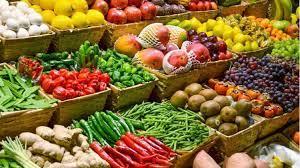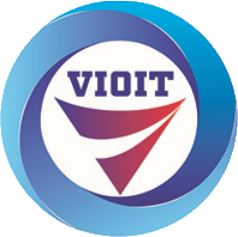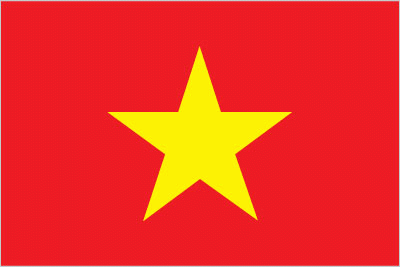
PROMOTE THE EXPORT OF SOME MAJOR AGRICULTURAL PRODUCTS OF LAM DONG PROVINCE IN THE CURRENT CONTEXT
15:04 - 08/10/2021
Assoc. Prof. Dr. Phan The Cong; MSc. Vu Anh Tuan
Thuongmai University
(The article was published in Print Review No. 59 (May 2021)).
Lam Dong is a province with many advantages for agricultural development. The article assesses the current situation of agricultural production and export in Lam Dong province, thereby proposing solutions to promote agricultural export activities in the province in the coming time.
- Overview of agricultural exports of Lam Dong province
Lam Dong is one of five provinces in the Central Highlands, adjacent to the southern key economic region. Lam Dong is a province with many advantages in terms of climate and soil for agricultural development. With over 380 thousand hectares of agricultural land, with a temperate subtropical climate, Lam Dong province produces many agricultural products, including key commodities such as tea, vegetables, coffee, cashew...
In recent years, Lam Dong's agriculture has made great progress in terms of production scale, value, and income per unit area. The average production value of the province in 2020 has reached VND 185 million/ha/year, up 27.5% compared to 2016. The province currently has 60,288 hectares of hi-tech agriculture, accounting for 20.1% of the cultivated area, the value is estimated at over 40% of the crop production value; The average production value per unit of hi-tech farming area is 400 million VND/ha.
Lam Dong province also determined to develop the processing industry. The province has planned and built 2 processing industrial parks for agricultural and forestry products (Phu Hoi Industrial Park, Duc Trong District and Loc Son Industrial Park, Bao Loc City) and 4 industrial clusters associated with agricultural raw materials areas such as Bao Loc city and other districts including Don Duong, Di Linh, Da Huoai. Up to now, the percentage of agricultural products that have been preliminarily processed and processed has reached 75%, the agricultural product processing industry accounts for about 47% of the production value of the processing and manufacturing industry and accounts for 35% of the production value of the whole industry. According to statistics of the Ministry of Agriculture and Rural Development, the country has over 150 industrial-scale fruit and vegetable processing establishments with a total designed capacity of over 1 million tons of products per year. In particular, Lam Dong is one of the few provinces with 10 or more large processing enterprises with key processing products such as dried fruits, production of fruit jams, pickled cucumbers.
Regarding branding for Lam Dong agricultural products, the province has developed and strongly implemented the agricultural development project towards a multi-sectoral approach, successfully building geographical indications as well as trademarks of Lam Dong agricultural products with trademark "Da Lat - Magical crystallization from good land".
Currently, Lam Dong agricultural products have been exported to more than 40 countries around the world, of which the traditional markets are Northeast Asia, the European Union and North America. In particular, Lam Dong agricultural products have been exported to markets such as Japan, the EU and the US. At the same time, Lam Dong agricultural products are also purchased by many multinational corporations and large distributors as raw materials. The value of exported agricultural products currently accounts for about 53% of the total export value of goods of Lam Dong province with an average growth rate of about 13% per year in the 2016-2020 period.
- Export situation of some main agricultural products of Lam Dong province
2.1 Export results of some main agricultural products
About vegetable products
Lam Dong currently cultivates 70,050 hectares of vegetables of all kinds with an output of 2.57 million tons with 3 main product groups: (1) group of leafy vegetables (lettuce, cabbage, collard greens, herbs...) accounting for about 48%. 2) the group of root vegetables (potatoes, carrots, onions, etc.) accounts for about 20% and (3) the group of fruit vegetables (conjugates, eggplants, tomatoes, beans, etc.) accounts for about 32%. The province currently has 118 fruit and vegetable processing enterprises, each year processing about 44,221 tons of finished products.
In 2020, Lam Dong exported 34,559 tons of vegetables of all kinds, valued at USD 60.73 million, up 77.45% in volume and 44.59% in value over the same period last year. The main exported vegetable products are: sweet potatoes, pumpkin, bell peppers, sweet corn, carrots, yams, spinach, cabbage... The main export markets for vegetables are East Asian countries (Japan), Taiwan, China, Hong Kong), EU market (UK, Netherlands, France, Belgium), US and Asean region (Singapore, Malaysia).
Floral items
Lam Dong currently cultivates 9,323 hectares of flowers of all kinds with an output of 3,658 million flower stems. The area for cultivation of flowers of all kinds using high technology is about 2,927 hectares. High-tech flower production model in Thai Phien, Ward 12 with a scale of 150 hectares applying automatic sprinkler irrigation systems, drip irrigation, greenhouses, net houses, substrates...
In 2020, Lam Dong province exported 371 million flower stems and flower pots of all kinds, valued at 58.71 million USD, up 19.57% in volume and 15.22% in value over the same period last year. Lam Dong flowers are mainly consumed in major domestic cities (accounting for 89.6%) and partly exported (accounting for 10.4%). The flower export market is quite diverse, with East Asia at the top, followed by Australia, Europe (Netherlands, Denmark, Belgium, Russia) and the ASEAN region (Singapore, Thailand, Indonesia).
- Tea products
The tea area in Lam Dong in 2020 is 12,104.9 hectares, the output is 174,882 tons, of which there is about 6,583 hectares of tea. In which, there are about 2,750 hectares of high-quality tea with synchronous application of automatic irrigation and fertilization systems. The province currently has 167 tea processing companies with a scale of 38,563 tons of finished products/year, concentrated in Da Lat, Bao Loc, Bao Lam, Lam Ha and Di Linh cities. The current tea processing capacity is much higher than the raw material production capacity because the area and output of tea is decreasing, leading to a shortage of raw materials at some processing facilities. Processed tea products are quite diverse such as green tea, oolong tea, black tea, flavored green tea and preliminarily processed green tea.
Lam Dong tea exports mainly to Taiwan and Middle East markets such as Pakistan, Afghanistan... In 2020, Lam Dong exported 8,928 tons of tea with a value of 21.2 million USD, down 16.46% in volume and 15.8% in terms of value compared to the same period of the previous year.
- Coffee products
Lam Dong currently has 174,142 hectares of coffee with an output of 516,603 tons. The area of coffee applying high technology reached 21,945.8 hectares, mainly applying sustainable farming, grafting improvement, automatic and economical irrigation. In the province, there are 25 coffee processing enterprises with a processing scale of 190,059 tons and over 250 small and individual processing establishments with a capacity of about 109,941 tons of coffee beans. Regarding roasted and ground coffee, coffee powder, Lam Dong currently has 168 enterprises and processing facilities that have been certified with food safety conditions with a total output of about 10,244 tons/year.
Lam Dong coffee exports are mainly coffee beans. In 2020, the province exported 99.52 thousand tons of coffee beans worth 153.74 million USD, down 18.91% in volume and 22.19% in value over the same period last year. Currently, 80% of Lam Dong's coffee is purchased by corporations such as OLAM, Louis Dryfus, Nestle, and 20% is processed and exported directly by other companies. Lam Dong coffee is exported to many countries, mainly the US, Mexico, UK, Italy, Germany, Spain, Portugal, Denmark, Russia, Japan, Korea, China, and Thailand. Lan, Singapore…
2.2 General assessment of the export situation of some main agricultural products of Lam Dong province
In the past time, production and export of agricultural products of Lam Dong province have achieved some success, exporting many items with high economic value such as vegetables, flowers, tea, coffee, cashew. Lam Dong's agricultural industry has made efforts to reorganize production in the direction of linking the value chain, connecting with the global consumption system. The increase in processing and product higher value of the province's agricultural sector has created many jobs with higher incomes for farmers. Thereby, a number of key agricultural products of the province and a number of value chains of enterprises have been able to participate in high value-added stages in the global value chain. However, besides the successes, there are still many limitations that affect the export results of the province's main agricultural products such as:
Firstly, the fragmented production situation makes it difficult to implement mechanization, low productivity, uneven quality. Most of the farming households lack the capacity to access the market. Agricultural products are mainly exported in raw form with low added value in the value chain of agricultural products.
Second, the link between production, processing and consumption of agricultural products in the province has not brought much efficiency, lack of synchronization and is not sustainable. The key factors for the development of production links are enterprises and cooperatives. However, both of these forces develop slowly, not commensurate with the potential of the province.
Third, labor productivity has improved but remains low due to the low level of mechanization in production, especially in the care and harvesting stages. Most of the province's main export agricultural products (vegetables, flowers, coffee...) are harvested entirely by hand. The implementation of the policy of land accumulation has changed slowly, so even though concentrated farming areas have been established, the lack of uniformity in the cultivation process is a major obstacle to the implementation of solutions on mechanization.
Fourth, the number of small and medium-sized agricultural product processing establishments and households in Lam Dong is quite large, but with old equipment and outdated technology, it consumes a lot of raw materials, energy, and low productivity. Post-harvest losses are still large, ranging from 10-20%. Therefore, at present, only large export enterprises are involved in the processing industry because investing in an agricultural product processing factory with modern production lines requires huge funds and a long payback period.
Fifth, the export enterprises of the province are mostly small in scale, weak in financial capacity, leading to limitations in technology investment, trade promotion, branding and product promotion.
- Proposal to promote export of agricultural products in Lam Dong province in the coming time
Lam Dong province still has a lot of potential to develop agricultural export activities. To promote the export of Lam Dong agricultural products in the next period when still having to deal with the Covid-19 epidemic, it is necessary to have solutions both on the part of state management agencies and businesses.
- Responsibilities of state management agencies of Lam Dong province
Firstly, Lam Dong Department of Industry and Trade needs to continue implementing many activities to support exports. In particular, developing and implementing projects to develop key agricultural products for export with the synchronous coordination of many units. At the same time, supporting businesses in expanding markets and finding partners through trade promotion activities. Encourage businesses to develop e-commerce, join e-commerce exchanges to increase the opportunity to promote products to customers.
Second, the Department of Industry and Trade should regularly organize training sessions to improve skills in export activities for businesses, disseminate information about trade agreements that Vietnam participates in, and provide professional training on export, declaration of origin of goods, methods of finding customers through online services. Continue to organize conference forums to connect trade fairs to promote products, increase consumption of Lam Dong's agricultural products in domestic and abroad to bring Lam Dong agricultural products to participate in strategic markets.
Third, the Department of Agriculture and Rural Development promotes the gathering of farmers into cooperatives. Production and export requirements for traceability and irradiation are very strict, difficult for farmers to meet, so the cooperative will replace farmers to build brands and market products.
Fourth, the province promotes connections and organizes programs to bring agricultural products into large distribution systems in import markets. Connecting with purchasing departments of large distribution groups such as Aeon, Walmart, Central Retail, Lotte, Mega Market can help Lam Dong's agricultural products increasingly participate more deeply in the value chain, global commodity supply chain.
Fifth, the province needs to have a policy to develop human resources for the agricultural export industry. Improving human resources from attracting talents to work long-term in the province and from training human resources on the spot. Human resources in need of training and retraining include state management officials in charge of export and human resources for enterprises producing and exporting agricultural products in the province.
Sixth, the province needs to promote the development of logistics services to support businesses, especially those that are new to exporting, package services (packing, storage, carrying out customs procedures, shipping, delivery, etc.).
- On the side of enterprises exporting agricultural products in Lam Dong province
Firstly, Enterprises need to improve the quality of exported agricultural products to penetrate foreign markets and add value, by investing more in technology, as well as in deep processing.
Second, Enterprises need to promote brand building in parallel with improving product quality. Lam Dong agricultural products are exported mostly in raw form, and the brand name of processed Lam Dong agricultural products known to consumers around the world is still limited. Businesses are primarily responsible for building their own brands. Enterprises need to survey the market's demand (taste, quality, price...) from which to determine the percentage of preliminarily processed products; percentage of refined products to guide product development, build marketing strategies, and position brands in accordance with their capacity.
Third, to promote trade, businesses need to focus on recruiting and training staff with foreign language skills and expertise; actively participate in trade promotion activities organized by ministries, branches and associations; attend international fairs and exhibitions both in domestic and abroad to introduce products and find customers; update information on changes in trade developments in order to promptly adjust production and business activities in line with market signals.
References
- Da Lat Flower Association (2020), Some difficulties, obstacles and solutions to support flower export businesses affected by the Covid-19 epidemic. Access at: https://lamdongdost.gov.vn/home/gioi-thieu/so-khoa-hoc-cong-listen/tai-lieu/type/detail/id/4555 ;
- Lam Dong Department of Industry and Trade (2019), Export situation of Lam Dong province in 2018. Visit at: https://lamdongdost.gov.vn/home/gioi-thieu/so-khoa-hoc-cong- listen/ear-lieu/type/detail/id/3411 ;
- Tran Duc Quan (2021), Organization to connect agriculture with processing industry, export market and global value chain of Lam Dong province. Access at: http://dalat-info.vn/vn/thang-3-2021/to-chuc-ket-noi-nong-nghiep-voi-cong-nghiep-che-bien-thi-truong-xuat- Kieu-va-chuoi-gia-tri-to-announce-court-finish-lam-dong-43802.phtml ;
- People's Committee of Lam Dong Province, Decision No. 756/QD-UBND dated April 19, 2017 deciding to issue a plan to implement Resolution No. 05-NQ/TU dated 11/11/2016 of the Provincial Party Committee on comprehensive, sustainable and modern agricultural development for the period 2016-2020 and orientation to 2025. Accessed at: https://thuvienphapluat.vn/van-ban/linh-vuc-khac/Quyet-dinh- 756-QD-UBND-2017-phat-trien-nong-nghiep-toan-dien-ben-vung-hien-dai-Lam-Dong-347367.aspx ;
- Lam Dong Provincial People's Committee, Decision No. 854/QD-UBND dated May 18, 2020 approving the plan to develop high-tech and smart agriculture application in Lam Dong province in 2020. Access at: https://thuvienphapluat.vn/van-ban/linh-vuc-khac/Quyet-dinh-854-QD-UBND-2020-phat-trien-nong-nghiep-ung-dung-cong-nghe -cao-tinh-Lam-Dong-443538.aspx .





